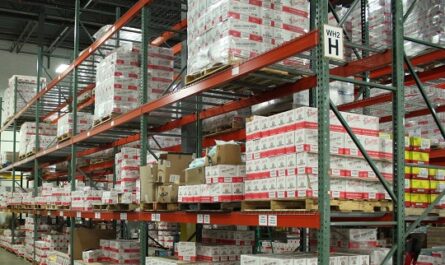In supply chain management, deciding how far down the supplier tiers to manage is crucial for efficiency and resource allocation. While focusing on Tier 1 suppliers can simplify management, extending oversight to Tier 2 or Tier 3 suppliers can help mitigate risks, improve supply chain visibility, and ensure the quality of critical components. However, managing more tiers requires more time and resources. The key is to balance the benefits of deeper management with the available resources, considering factors like risk, the importance of components, and the potential for technology to streamline processes.
Before we go further into this topic, don’t forget to follow my LinkedIn account. You’ll get more helpful insights on supply chain management there.
Table of Contents
Risk Mitigation
Managing suppliers across multiple tiers enhances risk mitigation by providing a broader view of the entire supply chain. While Tier 1 suppliers are directly linked to the company and often seem reliable, issues can arise with Tier 2 or Tier 3 suppliers that indirectly affect operations. For example, a problem at a Tier 3 supplier might cause delays or shortages that trickle up the chain, eventually impacting the end product. By extending oversight to these lower tiers, companies can detect potential issues early and take proactive measures to prevent disruptions.
Additionally, deeper management into Tier 2 and Tier 3 suppliers allows businesses to identify specific risks that might not be apparent when only focusing on Tier 1. This includes assessing the financial health, production capacity, and compliance of these suppliers. By understanding the entire supply chain, companies can develop contingency plans and diversify their supplier base if needed, reducing the likelihood of a single point of failure.
Another benefit of managing multiple supplier tiers is improved communication and collaboration throughout the supply chain. When businesses engage with Tier 2 and Tier 3 suppliers, they can foster stronger relationships and ensure that these suppliers are aligned with their standards and expectations. This collaboration can lead to better quality control, innovation, and efficiency, ultimately enhancing the overall performance of the supply chain.

However, it’s important to note that managing multiple tiers does require more resources, including time and personnel. Companies need to weigh these costs against the benefits of increased risk mitigation and supply chain stability. In many cases, the investment in managing additional tiers can pay off by preventing costly disruptions and maintaining smooth operations. Therefore, businesses should carefully consider their specific needs and capabilities when deciding how far down the supplier tiers to extend their management efforts.
You might also like:
- The Evolution of Supply Chain: Embracing New Challenges and Solutions
- How Often Should Operations Audits Be Conducted?
Supply Chain Visibility
The deeper you manage into the supplier tiers, the more visibility you gain into the entire supply chain. This comprehensive view is essential because it helps identify potential bottlenecks that can cause delays or disruptions. By knowing exactly where these issues are likely to occur, companies can address them before they impact production, ensuring a smoother and more efficient supply chain.
Additionally, this enhanced visibility allows businesses to optimize their processes. When companies have detailed information about each tier of suppliers, they can streamline operations, reduce waste, and improve overall efficiency. This can lead to cost savings and better use of resources, ultimately making the supply chain more resilient and effective.
Lastly, managing deeper into supplier tiers ensures that all suppliers comply with regulations and standards. This is particularly important for industries with strict compliance requirements. By maintaining oversight of not just Tier 1 but also Tier 2 and Tier 3 suppliers, companies can ensure that all parts of their supply chain adhere to necessary laws and quality standards. This reduces the risk of legal issues and helps maintain a high level of product quality and safety.
Resource Allocation
Managing suppliers across multiple tiers undeniably demands more time, manpower, and financial resources. Each additional tier you oversee means more suppliers to monitor, more data to analyze, and more relationships to maintain. This can significantly increase the workload for supply chain management teams and escalate costs associated with managing these activities.

Given these increased demands, it is essential to strike a balance between the benefits of deeper management and the resources required to achieve it. The goal is to maximize the advantages, such as improved risk mitigation and supply chain visibility, without overextending the company’s capabilities. Too much focus on managing multiple tiers can divert resources from other critical areas of the business, potentially causing inefficiencies elsewhere.
Conducting a cost-benefit analysis can help determine the most efficient approach to managing suppliers. This analysis involves weighing the potential benefits of deeper supplier management—such as reduced risk, improved compliance, and better quality control—against the costs in terms of time, money, and manpower. By quantifying these factors, businesses can make informed decisions about how far down the supplier tiers they should extend their management efforts.
For instance, a cost-benefit analysis might reveal that managing Tier 2 suppliers provides substantial risk mitigation benefits that justify the additional resources required. However, extending management to Tier 3 suppliers might show diminishing returns, suggesting that the effort and costs involved may not be worthwhile. This allows companies to allocate their resources more effectively, focusing on the areas that provide the greatest benefit.
In conclusion, while managing suppliers across multiple tiers offers significant advantages, it is crucial to balance these benefits with the resources required. A cost-benefit analysis provides a structured approach to making these decisions, ensuring that companies can enhance their supply chain management without overburdening their teams or budgets. By carefully evaluating the costs and benefits, businesses can find the optimal level of supplier management that maximizes efficiency and minimizes unnecessary expenditure.
You might also like:
- How to Find Affordable Suppliers: A Comprehensive Guide
- 12 Essential Criteria for Choosing the Right Material Supplier
Supplier Relationships
Building strong relationships with suppliers is crucial for fostering collaboration, innovation, and reliability. When companies have good relationships with their suppliers, they can work together more effectively, share ideas, and ensure a steady supply of high-quality materials. This collaboration can lead to innovative solutions and improvements in products and processes, benefiting both the company and its suppliers.

While focusing on Tier 1 suppliers helps in forming deeper relationships, extending management to lower-tier suppliers shows a commitment to the entire supply chain. This approach can incentivize lower-tier suppliers to improve their performance because they feel valued and supported. By involving Tier 2 and Tier 3 suppliers in management efforts, companies can encourage better quality, efficiency, and compliance throughout the supply chain, leading to overall better results and stronger partnerships.
Criticality of Components
When managing suppliers, it’s important to consider the criticality of the components they supply. Critical components are essential to the final product’s function and quality. If these components fail or are delayed, it can cause significant disruptions to production and negatively impact the end product. Therefore, ensuring the reliability and quality of these critical components is vital for the smooth operation of the supply chain.
For highly critical components, it may be necessary to manage suppliers down to Tier 2 or even Tier 3. This deeper management helps to ensure that not only the direct suppliers (Tier 1) but also their suppliers (Tier 2) and their suppliers’ suppliers (Tier 3) are meeting the required standards. By doing this, companies can better guarantee the quality and reliability of these components, identifying and addressing potential issues before they affect the production process.
In summary, the more critical a component is to the final product, the more important it becomes to extend management efforts to lower-tier suppliers. This approach helps to maintain high standards of quality and reliability throughout the supply chain, ensuring that critical components are consistently delivered on time and meet the necessary specifications. By managing suppliers down to Tier 2 or Tier 3 for highly critical components, companies can minimize risks and ensure the smooth operation of their supply chains.
Technology and Automation
Leveraging technology and automation can greatly streamline supplier management processes, making it easier for businesses to oversee suppliers across multiple tiers. Tools like supply chain management software, automated tracking systems, and data analytics can provide real-time insights and simplify tasks such as monitoring supplier performance, ensuring compliance, and managing communications. This reduces the manual workload and helps supply chain managers make more informed decisions quickly and accurately.
By using these advanced technologies, companies can manage their suppliers more efficiently without needing to significantly increase their resource commitments. Automation handles repetitive tasks, freeing up staff to focus on more strategic activities. This way, businesses can maintain a high level of control and visibility over their entire supply chain, ensuring quality and reliability without overextending their resources.
Conclusion
In conclusion, deciding how far down the supplier tier to manage should consider risk, supply chain visibility, resource allocation, supplier relationships, component criticality, and available technology. While managing Tier 1 suppliers has benefits, extending management to lower tiers may be necessary for resilience and efficiency in today’s complex supply chains. The key is to find the right balance to maximize supplier management benefits while minimizing resource expenditure.
I hope you find it helpful!
Please share this article with your colleagues so they can also benefit. For more insights on supply chain management, follow my LinkedIn account. You’re free to use all articles on this blog for any purpose, even for commercial use, without needing to give credit.
 by
by 
